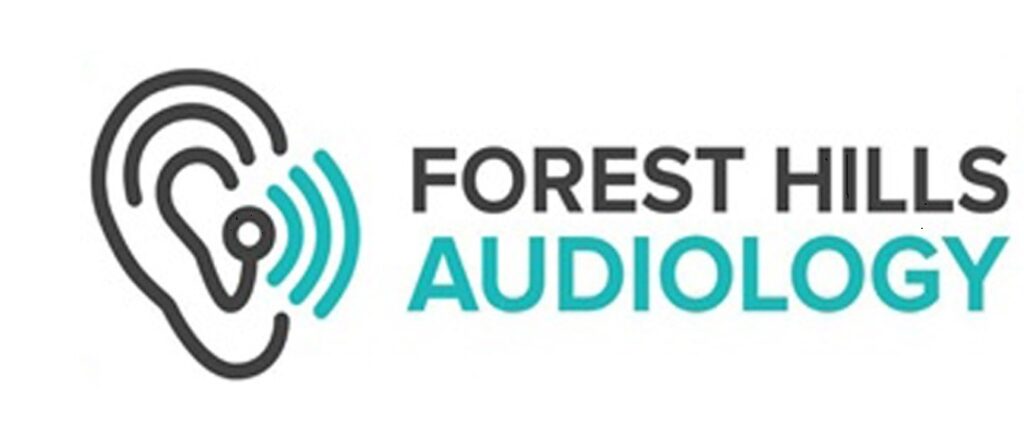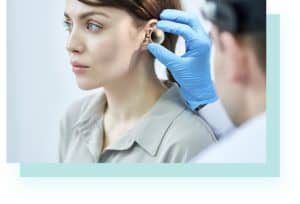Hearing loss is a common condition that affects millions of people worldwide. It can occur gradually or suddenly, and can have a significant impact on an individual’s quality of life. Detecting signs of hearing loss early on is crucial, and seeking the professional assistance of an experienced audiologist can help you or your loved one get the support needed for optimal health. An audiologist is a healthcare professional who specializes in diagnosing and treating hearing loss.
One of the first steps an audiologist will take is to conduct a hearing test. There are several different types of hearing tests and each one measures a different aspect of your hearing. We will take a closer look at the different types of tests and what they measure.
- Pure-tone Audiometry
Pure-tone audiometry is the most common type of hearing test performed by audiologists. During this test, the audiologist will use headphones to play a series of tones at different volumes and frequencies. The patient will be asked to indicate when they can hear the sound by raising their hand or pressing a button. The purpose of pure-tone audiometry is to measure the softest sounds that a person can hear at different frequencies. This test helps the audiologist determine the degree and type of hearing loss a person may be experiencing.
- Speech Audiometry
Speech audiometry measures how well a person can understand speech at different volumes. The audiologist will play a series of words or sentences at various volumes and ask the patient to repeat them. This test can help determine if a person is experiencing difficulty understanding speech, even if they are able to hear sounds clearly. Speech audiometry can also be used to measure the effectiveness of hearing aids or other assistive devices.
- Tympanometry
Tympanometry measures the movement of the eardrum in response to changes in air pressure. During this test, a small probe is placed in the ear canal and air pressure is applied. The test measures the movement of the eardrum and can help the audiologist determine if there is a problem with the middle ear. Tympanometry can help diagnose conditions such as fluid in the middle ear, perforated eardrum, or a blockage in the ear canal.
Additional Hearing Tests
In addition to the three types of hearing tests mentioned, there are several other tests that an audiologist may perform depending on the individual’s symptoms and needs. Here are a few examples:
- Auditory Brainstem Response (ABR)
ABR is a test that measures how the hearing nerve and brain respond to sound. During the test, electrodes are placed on the patient’s scalp and earlobes, and a series of clicks or tones are played through headphones. The electrodes record the response of the hearing nerve and brain. ABR is typically used for newborn hearing screening or for patients who are unable to participate in other types of tests.
- Otoacoustic Emissions (OAE)
OAE measures the sounds that are produced by the inner ear when stimulated by sound. During the test, a small probe is placed in the ear canal, and a series of clicks or tones are played through headphones. The probe records the sounds that are produced by the inner ear. OAE can help diagnose conditions such as hearing loss caused by damage to the hair cells in the inner ear.
- Electrocochleography (ECochG)
ECochG is a test that measures the electrical activity of the cochlea in response to sound. During the test, electrodes are placed on the patient’s scalp and earlobe, and a series of tones are played through headphones. The electrodes record the electrical activity of the cochlea. ECochG can help diagnose conditions such as
Meniere’s disease, which is characterized by loss of hearing, tinnitus, and vertigo. It can also be used to monitor changes in the cochlea over time and track the progression of certain types of hearing loss.
- Vestibular Evoked Myogenic Potentials (VEMP)
VEMP is a test that measures the function of the vestibular system, which is responsible for balance and spatial orientation. During the test, electrodes are placed on the patient’s neck and forehead, and a series of clicks or tones are played through headphones. The electrodes record the response of the muscles in the neck and eyes. VEMP can help diagnose conditions such as vestibular disorders, which can cause dizziness and balance problems.
What to Expect During a Hearing Test
If you have never had a hearing test before, you may be wondering what to expect. A typical hearing test consists of several steps that are designed to evaluate your hearing ability and identify any potential hearing loss.
First, you will have a consultation with the audiologist. During this conversation, the audiologist will ask you about your symptoms and medical history. They may also ask you about your lifestyle and any activities or situations where you have difficulty hearing. This information will help the audiologist determine which tests are appropriate for you.
Next, the audiologist will perform a physical examination of your ears. They will use an otoscope to examine your ear canals and eardrums for any visible signs of damage or blockages. This examination is painless and only takes a few minutes.
The most common type of hearing test is called pure-tone audiometry. During this test, you will wear headphones and listen to a series of tones at different volumes and frequencies. You will be asked to indicate when you can hear the sound. This test is designed to measure your hearing threshold, or the softest sounds you can hear at different frequencies.
If necessary, the audiologist may also perform speech audiometry to measure your ability to understand speech at different volumes. This test involves listening to words or sentences and repeating them back to the audiologist.
The audiologist may also perform tympanometry to measure the movement of your eardrum in response to changes in air pressure. This test can help diagnose conditions such as middle ear infections or fluid buildup in the ear.
After the test is complete, the audiologist will discuss the results with you. They will explain any hearing loss that was detected and recommend appropriate treatment options. This may include hearing aids for severe hearing loss, cochlear implants, or other assistive listening devices. Remember, hearing tests are not just for those who suspect hearing loss. They can also help detect potential problems early on and prevent further hearing damage. So, don’t hesitate to schedule an appointment with an audiologist to ensure that your hearing is in good health.


